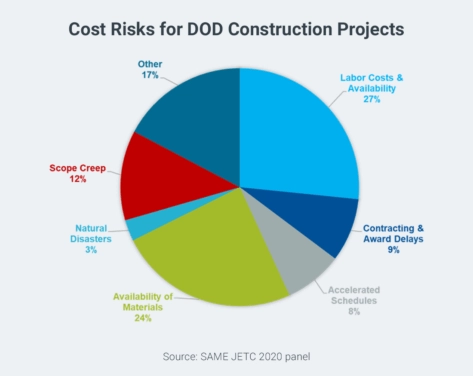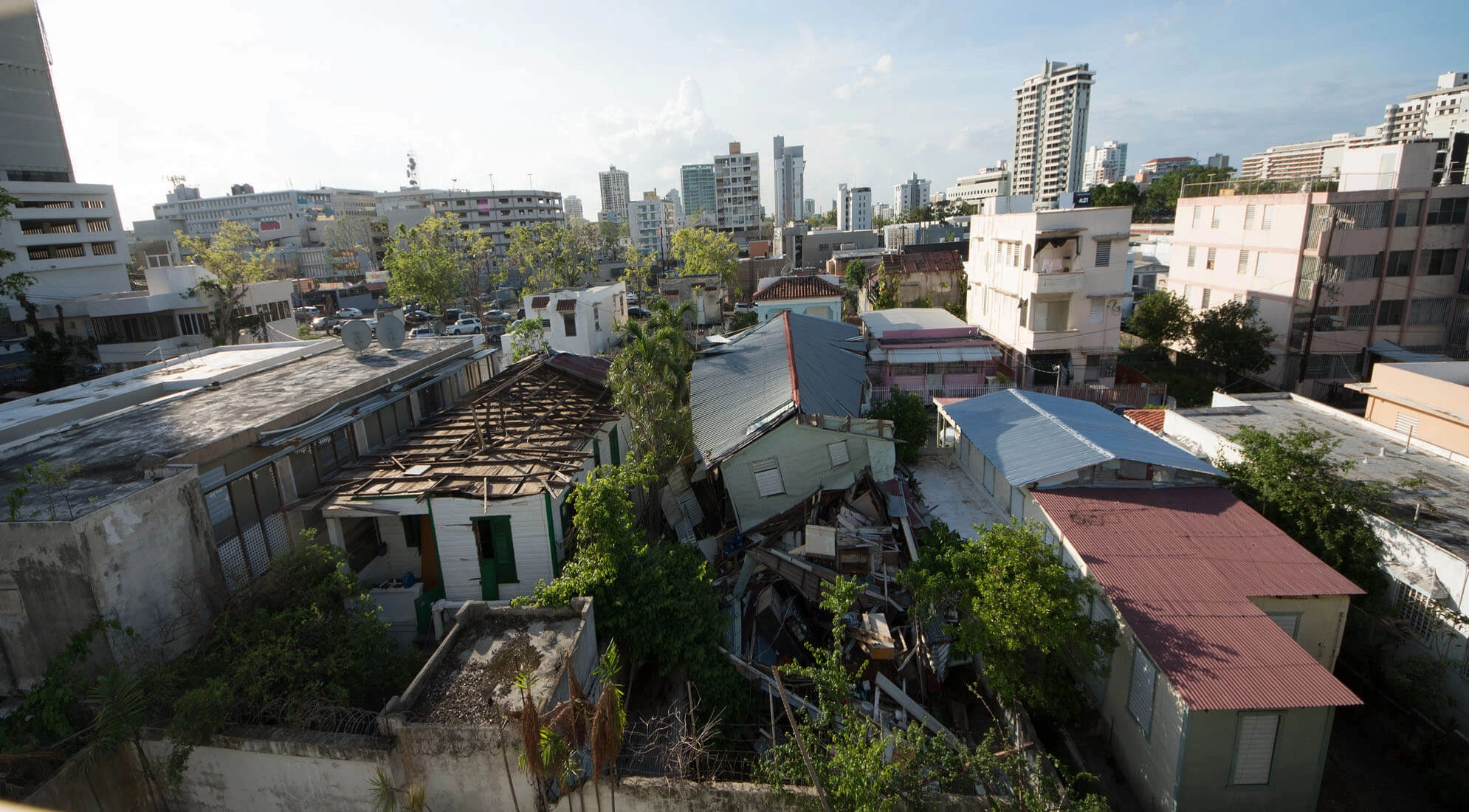The 2020 Society of American Military Engineers (SAME) Joint Engineer Training Conference (JETC) featured a panel of leaders from the Department of Defense (DOD) discussing construction cost estimating challenges. The panel polled the audience to discover typical risks to material, labor and equipment costs. The responses, in order of popularity reveal an informed industry perspective:
 • Labor Costs and Availability
• Labor Costs and Availability
• Material Availability
• Scope Creep
• Contracting and Award Delays
• Accelerated Schedules
• Natural Disasters
The risks identified by the audience represent a complex nexus of challenges, a web of ways costs could overrun. Material availability and supply chain hiccups can lead to project delays and compounded cost increases. Natural disasters create volatility in local markets. Scope creep lurks in the crevices of any construction project, threatening to overrun standard contingency budgets. These problems, complicated as they are, cannot be overcome with any single solution. There’s no magic wand that can make them disappear, no secret for untangling the web. But Federal construction leaders can reduce some of these common risks by using accurate, current construction costs to estimate projects and ensuring the skilled, best practice application of that that cost data.
DOD Construction Risk: Labor Costs and Availability
Overall labor costs respond relatively slowly to supply and demand misalignment, but lack of labor availability in the trades can significantly impact the cost of specific projects. Possessing up-to-date construction costs won’t cure industry-wide or location-specific labor shortages, but it can provide an accurate basis for calculating direct labor costs based on a combination of most recent Davis-Bacon wages and union and market wages, which can be significantly higher. With an accurate direct labor cost benchmark, it becomes easier to incorporate additional cost assumptions such as hiring outside of the direct geographic market, reduced productivity and contractor overhead and profit demands.
Another key element of labor costs is productivity rates for different work items. This requires the formulation of crews to include key equipment and operators, and it must be continuously updated to reflect new building technologies. Having an expert, trusted source of current cost data is critical, and this is particularly true when there are significant impacts to labor availability and productivity, as we are seeing in the current pandemic. Using labor costs developed in the pre COVID-era, without adjustments for the time it takes to don and doff personal protective equipment and adhere to other safety requirements is likely to result in inaccurate cost estimates.
At the DOD and other Federal government departments and agencies, Gordian’s RSMeans Data is the most trusted source of construction costs. Register for an upcoming webinar to hear RSMeans Data insiders discuss what’s new in the database for 2021.
DOD Construction Risk: Scope Creep
The Federal government appropriates billions for construction projects every year, and the planning cycle makes it impossible to nail down the exact scope of work during the project formulation or budgeting phase. Recent and emerging cost data innovations such as predictive cost data, parametric cost models, AI-driven scoping tools and advanced program analytics can help better predict the cost of construction in the planning stage. A healthy contingency is still required, but current and accurate cost data can help DOD and other Federal owners manage the costs associated with scope creep and better evaluate design options to avoid reprogramming by allowing all stakeholders to accurately understand potential tradeoffs — areas where the team might be able to save to accommodate the new direction.
DOD Construction Risk: Natural Disasters
The only things guaranteed to follow natural disasters are construction crews and the Weather Channel. There’s little to be done about the latter. As to the former, a single source of cost data truth is vital for supporting disaster recovery stakeholders, helping communities get back on their feet and making local governments whole, all while helping the Federal government act as good stewards of disaster funding.
But construction costs have the potential to be volatile as a significant program of recovery work is undertaken, especially in smaller or outlying areas. Sometimes a higher-resolution view of costs is required. For instance, the Federal Emergency Management Agency (FEMA) used a recovery-specific cost database developed by Gordian to grant funds in the aftermath of Hurricanes Irma and Maria. Rather than rely on construction costs published before the storm, FEMA requested the cost engineers conduct research in Puerto Rico, St. Croix, St. Thomas and St. John to gather real-time information on material, labor and equipment costs. These on-the-ground insights, combined with rigorous research protocols resulted in a specialized database using industry standard RSMeans Data construction costs.
Possessing current construction costs gave FEMA the confidence to distribute the correct amount of aid to grantees. Similarly, current construction costs can help other Federal government agencies and departments, like those in the DOD, to be ready to react and recover should a natural disaster disrupt a construction project.
Current Construction Costs: Risk Deflater
Nothing can eliminate all financial risk of a construction project. But possessing current construction costs can deflate risk and at least partially nullify some of the Federal government’s most significant, most typical cost risks.







